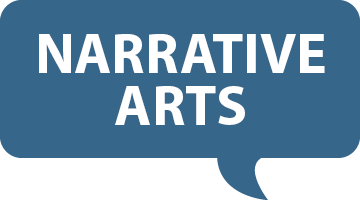How do we develop a storytelling strategy?

One of the most common questions people ask about communications is, “How can I make our new video go viral?” And another one: “How can we get a story about us in the newspaper?”
Trying to get in the paper or make a popular video is driven by a valid desire—to tell people about the valuable work you do. But such questions put the cart (tactical matters about particular media) before the horse (your strategy to achieve a goal). To develop a strategy, answer a series of questions.
What do we want to achieve?
A strategy is a carefully considered plan of action to achieve a goal. Your goal should identify some change that you want to make, rather than the way you make that change. Your goal is not to get in the paper or have a viral video—your goal is to create jobs or end human-rights abuses. To develop a storytelling strategy, identify your big goal and then your SMART objective(s).
- Specific: Identify a discrete need. “End poverty” is vague, while “increase employment among low-income mothers” is more specific.
- Measurable: Set a target number and have the means to measure progress. “Create 500 jobs in high-growth job sector” is measurable so long as you have the means to count the jobs you help create.
- Attainable: Your objective can be ambitious, but it should be plausible, given your capacity and the nature of the problem.
- Relevant: Your objective should be closely tied to your mission and should come at the right time.
- Time-bound: Part of making your objective measurable is knowing when you plan to achieve it. “Create 500 jobs in our city within one year” is a time-bound goal.
“Raising awareness” is almost never an end goal, but rather an intermediate goal, because people must first know about you before they support you. But ultimately you want their support or participation, but just their awareness.
Who can help us achieve our objectives?
Whatever your goal, you’ll need people to help you out. And those people—your audiences—must be clearly defined.
There’s no such thing as a “general public” in storytelling for social change. If you’re aiming at a general public, you’re not being strategic. There are only target audiences you’ve identified who can help make the change you want to see, or who you work with to decide what that change looks like in the first place.
If your goal is to create 500 new jobs in your city, you may need government officials to fund the project, employers to provide jobs, and job candidates to sign up. You have to communicate with each group of people to enlist their support or participation.
Specify—or “segment”—your audiences as much as you can. In the example above, “government officials,” “employers,” and “job candidates” are a good start, but even those are broad categories. Get more specific. Maybe you’re looking for employers in a high-growth field such as health care; or maybe your target job-seekers are young single mothers, because when they have jobs, the whole family benefits.
There are two kinds of audiences—the people who will make the change you want to see, and the people who influence them. If you’re looking for policy change, the people who make the decisions are policymakers, and the people who influence them might be voters, or campaign donors, or union leaders. If you’re looking to affect people’s behavior—to get them to stop smoking, for example—then smokers themselves are the ones who make decisions, and the people who influence them might include their parents, their peers, or celebrities they admire.
How do I reach my target audiences?
As mentioned above, many people want to know how get into the New York Times or other big media outlets. However, the more important question here is “How do we reach the target audience we’ve identified?”
Let’s say you want to rally high school students’ parents around your cause; maybe a parents’ magazine or a popular PTA blog would be your best bet. Sure, a nod in the nation’s newspaper of record can’t hurt, but it’s a question of where you put your resources.
The means of reaching your target audience may not even be a media outlet; it might be street theater or conference speakers or Meetup groups. In all likelihood, you’ll be using various media to reach your target audience. Your stories can be adapted to different media or venues.
And what stories do I tell them, or ask them to tell?
Once you know how to reach the people who will help you make the change you’re working for, what do you say?
A good story—or at least an effective one—is one that activates your target audiences. And that topic is covered elsewhere in this guide.
The question is more complicated than that, however. Storytelling is multidirectional. You tell stories to your donors. Your donors talk to you. Journalists write articles about your partner groups. People post on Twitter and Facebook about you. Audience members at your documentary film screening will share their stories during the Q&A.
Your job as a communicator is not only to tell stories. It is also to listen and to enable other people to tell stories in such a way that it helps make the change you want to see—or helps you figure out what that change looks like.
For now, the larger point is that good social-justice storytelling is guided by strategy, and developing a “story strategy” requires that we back up and ask bigger questions that, at first blush, don’t have to do with a particular story.
Further exploration:
- Smart Chart, from Spitfire Strategies, is an excellent free online tool that walks users through the process of creating and evaluating a communications strategy.
- Now Hear This, from Fenton Communications, is a guide on advocacy communications with plenty of illuminating examples.
